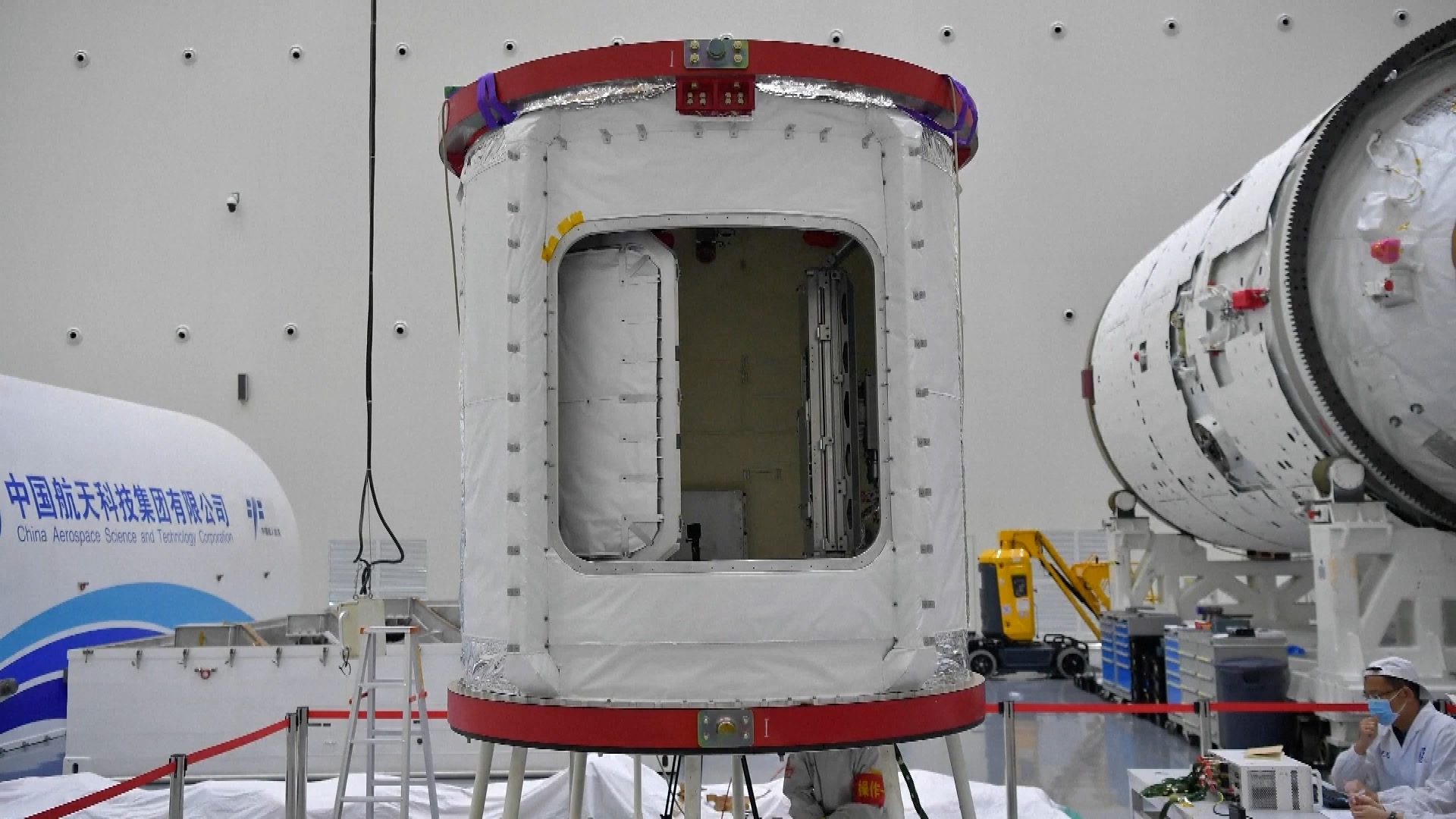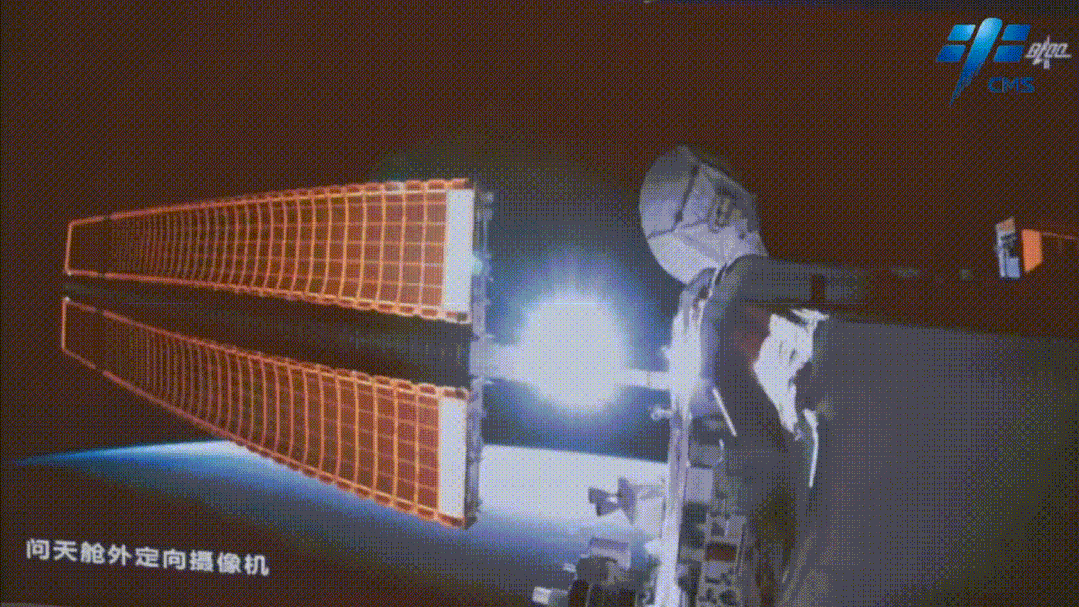The Mengtian lab module launched on Monday is equipped with a unique payload that's able to release micro-spacecraft and satellites into space.
The payload, called the on-orbit release mechanism, can deploy micro-spacecraft and CubeSats of up to 100 kilograms into orbit and is the first of its kind loaded on the China Space Station.
Mengtian, which means "Dreams of Heaven," is the last "building block" that allows China's space station to form a T-shaped three-module structure.
It docked with the space station complex currently composed of the Tianhe core module and the Wentian lab module Tuesday morning.
The module looks pretty much the same as its sister lab module Wentian and is similar in size and weight, but it will serve primarily for carrying out scientific research under microgravity.
Here are the highlights of some unique features of Mengtian:
01:08

The first on-obit release mechanism
Compared with launching and deploying satellites by rockets, doing so through a space station is safer, cost-efficient and has better utilization of the station, said Yang Yuguang, the vice chair of the Space Transportation Committee of the International Astronautical Federation.
Launching satellites via the lab module involves several steps. First, the satellites are loaded inside the Tianzhou cargo spacecraft that can be launched and docked with China's space station. Then, astronauts and scientists aboard the space station would perform a check on the satellites before releasing them through the mechanism.
"It serves as an extra test in orbit and make sure the satellites are intact," Yang told CGTN.
Similar to sending a payload outside the cabin, the satellites will be packed as an entire cube and transported to the airlock cabin, or the payload cabin, to be grasped by the robotic arm when released towards a safe direction.
A multi-purposed airlock cabin
Both of the lab modules, Wentian and Mengtian, are equipped with airlock cabins, but the one aboard Mengtian is more like a "cargo port." It can transfer both experimental and cargo payload – a payload cabin as scientists put it – while functioning as an airlock cabin.
What's more special about this cabin is that it can transfer payload inside and outside the cabin automatically, like a revolving door.
More experiment cabinets
Mengtian is mainly designed for scientific experiments. Unlike Tianhe and Wentian, it doesn't have any sleeping area or toilet. Instead, Mengtian houses eight cabinets installed onto the wall, the most among other modules.
The multi-disciplinary laboratory cabinets are for experiments in fluid physics, materials and combustion science, basic physics and aerospace technology.
Read more: What's inside the Mengtian lab module of China's space station?

A solar array is shown outside of Wentian lab module of China's space station. /China Manned Space Agency
A solar array is shown outside of Wentian lab module of China's space station. /China Manned Space Agency
Powerful solar wings
Many say the most eye-catching parts of the China Space Station are these two pairs of flexible solar panels on both Wentian and Mengtian lab modules. Each pair has a total length of around 55 meters and a combined area of nearly 280 square meters.
These four big solar wings will generate nearly 1,000-kilowatt hours (kWh) of electricity for the China Space Station per day, which is equivalent to the electricity consumption of an ordinary family for nearly half a year.
China has upgraded its solar wings in the process of China Space Station assembly – from rigid solar wings on the Shenzhou manned spacecraft, to semi-rigid solar wings on Tianzhou cargo ships, to the flexible solar panels on the two lab modules.
In addition, "We have a special equipment called solar array huge driving device, wrist-like bearing units to help rotate these two solar arrays, 360 degrees to face the sunlight in unblocked positions," Liu Bihai, deputy chief designer of Mengtian Power System Shanghai Academy of Spaceflight Technology under China Aerospace Science and Technology Corporation.
Read more: Homegrown solar array powers nation's space ambition